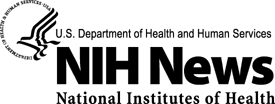NIH Consensus Panel Finds Celiac Disease Under-Diagnosed
Panel Recommends Six Key Strategies for Disease Management
Bethesda, Maryland — Celiac disease is considerably
under-diagnosed, according to an independent consensus panel convened
this week by the National Institutes of Health (NIH). The panel,
charged with assessing all of the available scientific evidence
on celiac disease announced today its recommendations for the appropriate
diagnosis and management of this disease, which was previously believed
to be rare. Celiac disease may affect 3 million Americans. The disease
is present in 0.5 to 1% of the U.S. population, ten times higher
than previous estimates.
"We know that celiac disease is caused by an immune response
to the gluten in certain common grains, so we have a very effective
treatment — a gluten-free diet — but if physicians don't
recognize when to test for the disease, patients are going to suffer
needlessly", said Charles Elson, MD, of the University of Alabama
at Birmingham, and chair of the consensus panel. He added, "Because
the disease has been thought to be rare, testing for it may not
occur to many physicians. We hope that this conference will help
to increase physician awareness."
The panel found that increasing physician awareness of the various
manifestations of celiac disease and appropriate use of available
testing strategies may lead to earlier diagnosis and better outcomes
for celiac patients.
Based on its assessment of an extensive collection of medical literature
and expert presentations, the panel identified six elements essential
to treating celiac disease once it is diagnosed:
C - Consultation with a skilled dietitian,
E - Education about the disease,
L - Lifelong adherence to a gluten-free diet,
I - Identification and treatment of nutritional deficiencies,
A - Access to an advocacy group, and
C - Continuous long-term follow-up.
The panel released its findings in a public session this morning,
following two days of expert presentations and panel deliberations.
The full text of the panel's draft consensus statement will be available
following the conference at http://consensus.nih.gov.
The final version will be available at the same Web address in three
to four weeks. Statements from past conferences and additional information
about the NIH Consensus Development Program are also available at
the Web site, or by calling 1-888-644-2667.
The panel's statement is an independent report and is not a policy
statement of the NIH or the Federal Government. The NIH Consensus
Development Program, of which this conference is a part, was established
in 1977 as a mechanism to judge controversial topics in medicine
and public health in an unbiased, impartial manner. NIH has conducted
119 consensus development conferences, and 22 state-of-the-science
(formerly "technology assessment") conferences, addressing
a wide range of issues.
The conference was sponsored by the Office of Medical Applications
of Research and the National Institute of Diabetes and Digestive
and Kidney Diseases, of the NIH. Cosponsors included the National
Institute of Child Health and Human Development, the National Cancer
Institute, the National Institute of Allergy and Infectious Diseases,
the U.S. Food and Drug Administration, and the U.S. Department of
Agriculture.
The 13-member panel included practitioners and researchers in gastroenterology,
pediatrics, pathology, internal medicine, endocrinology, a dietitian,
a geneticist, and a consumer representative. The panel reviewed
an extensive collection of medical literature related to celiac
disease, including a systematic literature review prepared by the
University of Ottawa Evidence-Based Practice Center, under contract
with the Agency for Healthcare Research and Quality (AHRQ). A summary
of the Evidence Report on Celiac Disease is available at http://www.ahrq.gov/clinic/epcsums/celiacsum.htm.
The full report will be available later this summer.
The archived videocast of the conference sessions will be available
shortly at http://consensus.nih.gov/.
Note to TV Editors: The news conference at 2 p.m. today will be
broadcast live via satellite on the following coordinates:
Galaxy 3 Transponder 07 C-Band
Orbital slot: 95 degrees West
Uplink Freq: 6065 Vertical
Downlink Freq: 3840 Horizontal
Audio 6.2/6.8
Test time: 1:30 - 2:00 p.m. ET
Broadcast: 2:00 - 3:00 p.m. ET
Note to Radio Editors: An audio report of the conference results
will be available after 4 p.m. today from the NIH Radio News Service
by calling 1-800-MED-DIAL (1-800-633-3425).
The NIH comprises the Office of the Director and 27 Institutes and
Centers. The Office of the Director is the central office at NIH,
and is responsible for setting policy for NIH and for planning,
managing, and coordinating the programs and activities of all the
NIH components. The NIH is a component of the U.S. Department of
Health and Human Services.
| 
